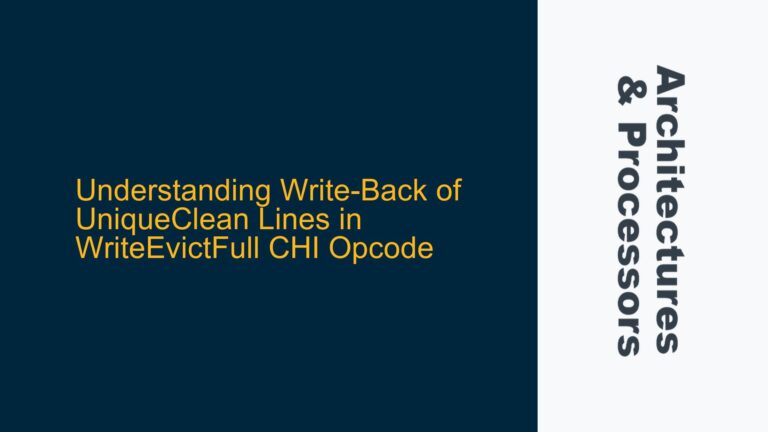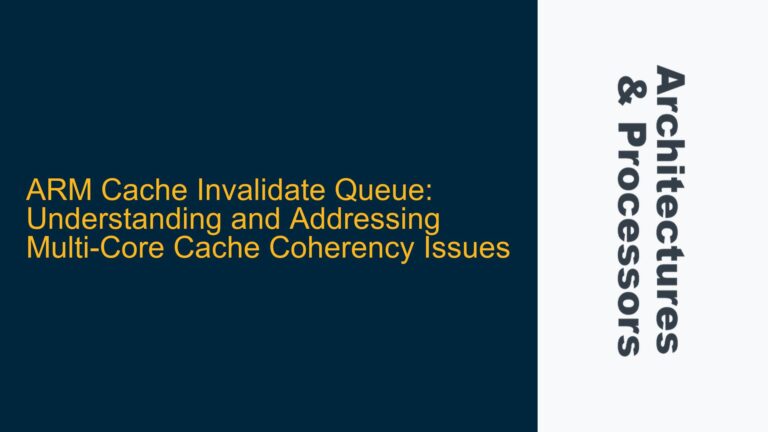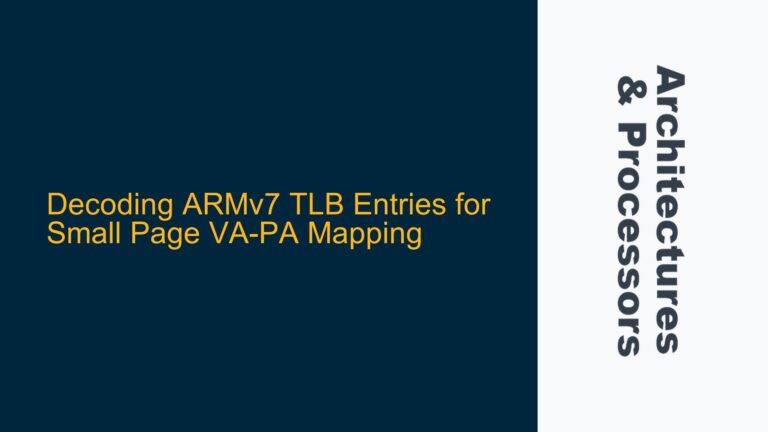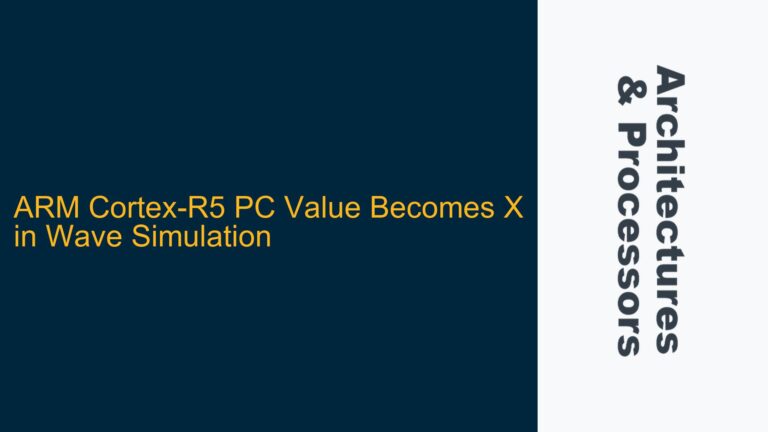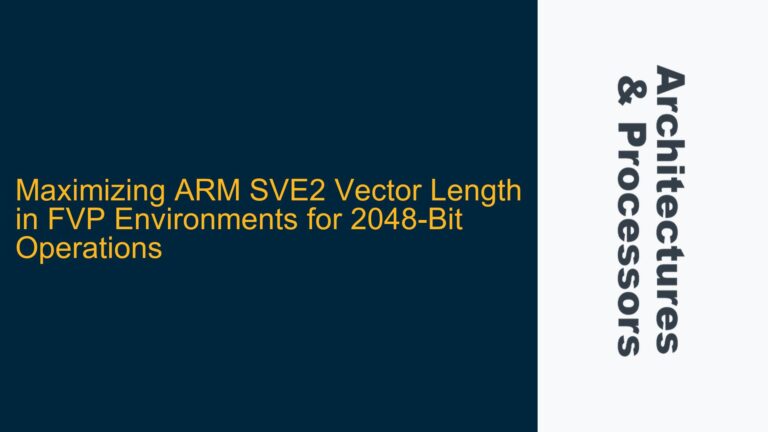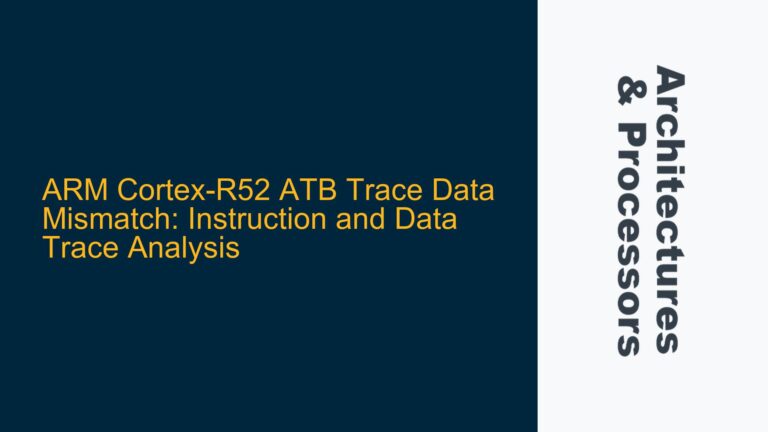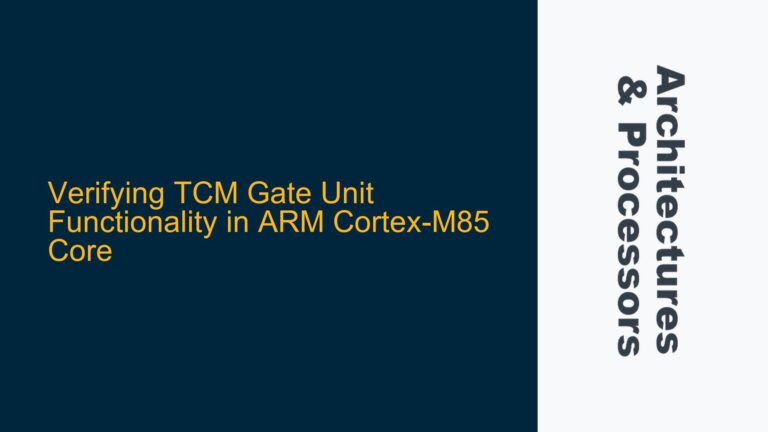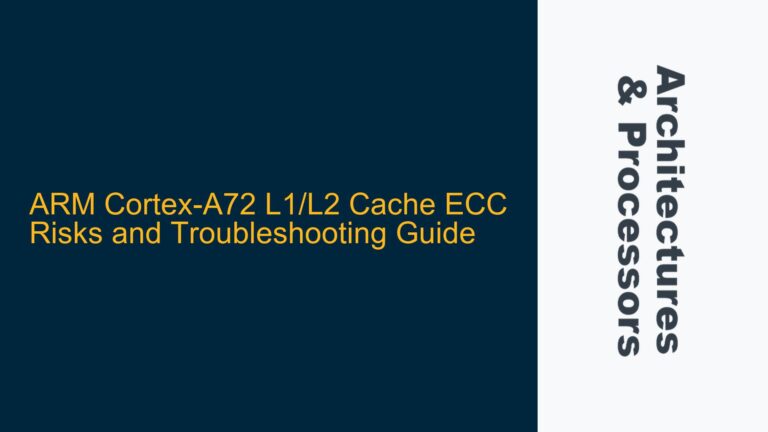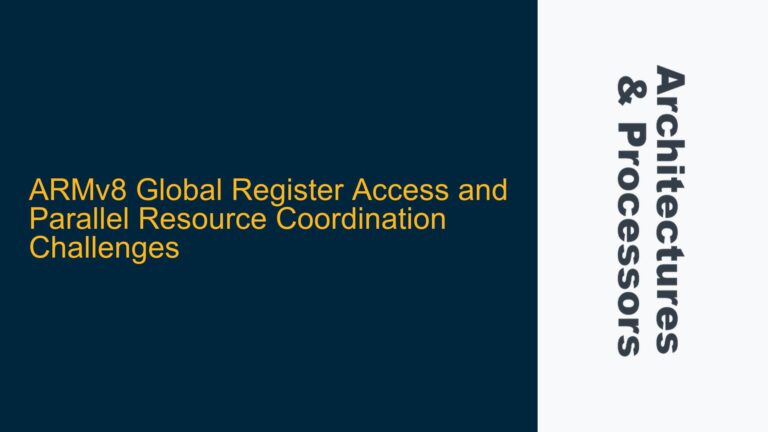Write-Back of UniqueClean Lines in WriteEvictFull CHI Opcode
ARM CHI Protocol and WriteEvictFull Opcode Behavior The ARM Coherent Hub Interface (CHI) protocol is a critical component of ARM’s system architecture, designed to manage cache coherency and data transfers between different nodes in a system. One of the key operations in the CHI protocol is the WriteEvictFull opcode, which is used to write back…
